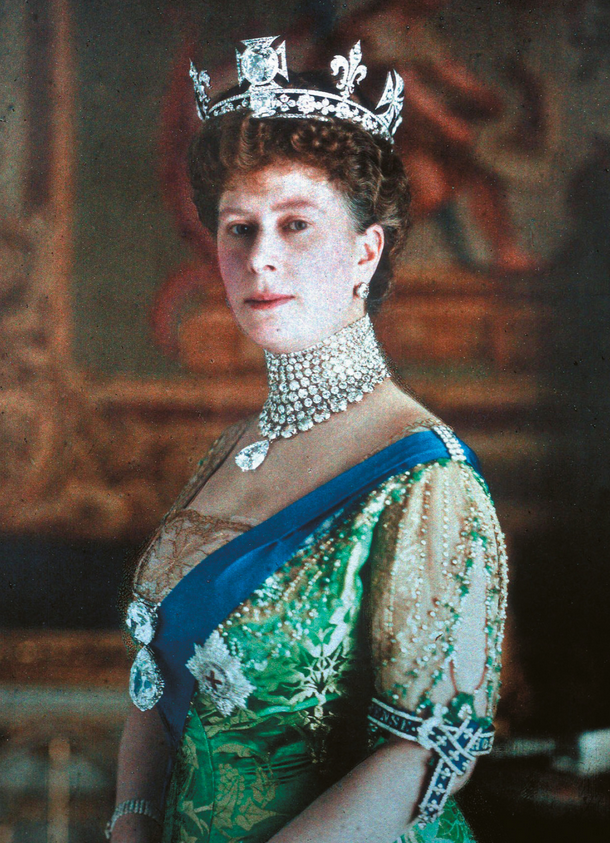A few days ago, 52-year-old Lucas Ncipe, assistant general manager of the Canadian diamond mining company Lucara, received a phone call from one of his engineers working at the Karowe mine in Botswana. “We found something incredible,” was the phrase he heard. He almost dropped the phone when he realized what it was about: the second-largest diamond in the world, weighing 2,492 carats. He informed his CEO, William Lamb, and immediately took the first flight to the African country. There, he was stunned when he saw the find up close. Its initial estimated value? According to the “Financial Times,” which spoke to sources at Lucara, its value, in its raw state, ranges from 40 to 90 million dollars. After the processing that will follow, its price is expected to soar to 220-250 million dollars.
The Gemological Institute of America in Botswana does not have the equipment to analyze the properties of the stone, making it uncertain where the diamond will go next. Lamb stated that diamantaires, the craftsmen responsible for cutting, polishing, and transforming a rough diamond, can only see clearly 2 centimeters inside the diamond with conventional equipment. The diamond measures 11x6x6.5 cm and weighs 500 grams (1 carat equals 0.2 grams). Now, Lucara will discuss with luxury brands, museums, collectors, and royal families to see if they are interested in purchasing it.
A Vast Market
The discovery of this diamond brings the discussion back to the spotlight about the brightest market, that of precious stones. With incalculable value and a mythic scale of turnover, the market of wealth and luxury generates vast revenues for countries whose subsoil contains these stones. Botswana’s diamond industry is a model of how resource extraction can benefit local economies, accounting for 80% of exports and one-third of tax revenues. “Botswana has shown that with clear leadership and a spirit of partnership between government and industry, it is possible to turn a country’s natural resource wealth into social and economic progress,” said Rohitesh Dhawan, CEO of the ICMM, the International Council on Mining and Metals.
To further substantiate this, it is no coincidence that (in succession) the Americans, the G7 countries, and the European Union included a ban on diamond imports from Russia in the sanctions against Moscow due to the invasion of Ukraine. Primarily from Alrosa, the world’s leading diamond mining company, imposing personal restrictions on its CEO, Pavel Alekseyevich Marinitchev.
When Josep Borrell announced in early January this year the addition of this ban to the EU’s 12th package of sanctions against Russia, he explained that it is part of a coordinated effort by the G7, together with the EU, “to deprive Russia of this significant source of revenue.”
Alrosa is the world’s largest diamond mining company, owned by the Russian state, and represents over 90% of Russia’s total diamond production, providing significant revenue to the central government.

(Queen Victoria Mary, the wife of King George V of the United Kingdom (and grandmother of Queen Elizabeth), is depicted in a 1914 photograph wearing the crown with the famous Cullinan Diamond, valued at over 400 million dollars)
The “Diamond” Map
According to 2021 data, the global diamond market involves the production of 118.75 million carats of rough diamonds, valued at nearly 13 billion dollars. Alrosa produces 39 million carats of diamonds, mining them from the subglacial sediments of the Eastern Siberian glacier and sending them to India for cutting and polishing. Its exports in 2021 were valued at 3.98 billion dollars. The following countries are Botswana with an annual production of 22.70 million carats of rough diamonds, Canada with 17.62 million, Congo with 12.97 million, South Africa with 9.72 million, Angola with 8.72 million, Zimbabwe with 4.23 million, and all other countries combined with 3.67 million.
The Russian oversupply leads to a significant drop in the prices of rough diamonds. Last year, the country supplied 27% of the world’s rough diamonds. Asian and Middle Eastern countries (such as the Emirates) did not participate in the G7 sanctions against Russian diamonds, which continued to flow into India, the world’s top cutting and polishing center. This, combined with the reduced absorption capacity of the world’s top market, China, and the rapid growth of much cheaper synthetic diamonds, leads to a further decline in rough diamond prices, which are almost at the same levels as in early 2011.
De Beers announced a 23% drop in sales in the first quarter of 2024, while its major shareholder, Anglo American, is looking for a buyer to sell it. Smaller producers, such as UK-listed Petra and Gem Diamonds, have a market value of 100 million dollars, equivalent to some of the large gemstones they aim to find. Lucara was also in the same category, but luck smiled on it in Botswana.
The Rise of Synthetics
For many years, diamond mining companies argued that dedicated buyers would continue to favor the allure of natural stones. They were wrong. Synthetic diamonds (LGD), which first appeared around 70 years ago, have gained sales momentum over the past decade, continuously increasing their market share. Last year, they already accounted for 18.4% of the global market (up from just 2% in 2017), intensifying competition among manufacturers and pushing prices down.
Millennials and Generation Z are the main drivers behind the boom in synthetic diamond sales, according to Pandora, the world’s largest jewelry manufacturer by volume. The production cost of synthetic diamonds can be up to 85% lower, and their selling prices are up to three times less than natural ones. Pandora was the first major company in the industry to stop selling mined diamonds in 2021, offering only synthetic ones, which are identical in terms of visual and chemical properties—though not to experts.
Artificial diamonds, which can be up to 85% cheaper than natural ones, are produced in laboratories under controlled environments using extreme pressure and heat. This process simulates how natural diamonds are formed deep within the Earth’s mantle.
Highly Coveted
“Diamonds are a girl’s best friend,” or for those who prefer, “Big girls need big diamonds.” These words belong to two of the top stars of previous decades, Marilyn Monroe and Elizabeth Taylor.
These statements hint at why diamonds are the most sought-after and expensive precious stones. Their variety in terms of shapes and sizes is impressive, their charm and radiance captivating, and their prices know no bounds. However, some diamonds are worth much more than others. Their prices are surprising, and it is no coincidence that each one’s rising value is accompanied by an interesting story.
The main reason these precious stones are so highly priced is their intrinsic physical properties. First and foremost, their hardness. Deriving their name from the ancient Greek word “adamas,” which means indestructible, diamonds rank at 10 on the Mohs hardness scale, meaning they are almost impossible to break, scratch, or engrave.
The most paradoxical fact is that diamonds are not as rare as many believe. In reality, they are one of the most common gemstones. However, only about 30% of mined diamonds are considered of gem quality. Another reason for their high price is market demand. The company De Beers, through successive advertising campaigns, attempts to convince men to spend two months’ salary on a diamond engagement ring.
Ask me anything
Explore related questions





